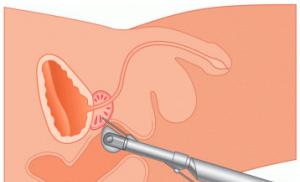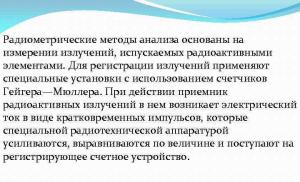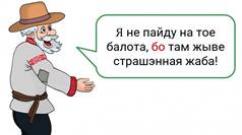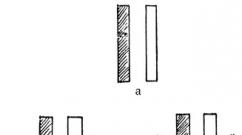Modern technology “Didactic syncwine” in the work of a speech therapist with children. Didactic syncwine - as a means of forming communicative actions in speech therapy classes PDD in the work of a speech therapist using syncwine
The use of syncwine in the correction of OHP contributes to the successful correction of the entire speech system as a whole: the impressive speech of children develops, the lexical side of speech is enriched and activated, word formation skills are consolidated, the ability to use sentences of different composition in speech is formed and improved, the ability to describe objects, and compose syncwine according to subject picture (plot) pictures, based on a listened story or fairy tale.
Modern technology “Didactic syncwine” in the work of a speech therapist with children.
“By learning their native language, a child learns not only words,
but also many concepts, thoughts, feelings,
artistic images..."
K. D. Ushinsky
In the modern world, processes of modernization of education are actively taking place. Modern preschool pedagogy cannot remain aloof from ongoing processes.
Speech is the most important means of communication and the pinnacle of cognitive processes. Preschool age is a period of active acquisition by a child of spoken language, the formation and development of all aspects of speech. Therefore, the speech development of preschool children must be considered as the basis of correctional activities.
Speech therapy practice has accumulated a sufficient number of methods, scientific works, and articles on the correction of speech disorders in preschool children. Today is characterized by the active growth of new developing technologies, many of which can be successfully used in correctional work.
Working with children with speech disorders, I came to the conclusion that it is necessary to make maximum use of all the techniques and methods known in special pedagogy, including modern methods that would contribute to: improving thinking and cognitive abilities, developing lexical-grammatical structure and coherence speeches of preschoolers. This means relying on a person-oriented, activity-based, integrated and differentiated approach, which meets the requirements of the Federal State Educational Standard for Education and the demands of the modern information society.
The child encounters objects and phenomena of the surrounding reality every day. Many interesting, new and attractive things open up before him. He has questions: “What is this? What is the name of? What is it made of and how? For what?"
And the task of adults is to clearly and correctly answer the child’s questions, help them understand the meaning of each word, remember it and use it correctly in speech.
To solve this problem, in my work with children I use educational technology " Didactic syncwine". Thanks to this technology, conditions are created for the development of an individual who can think critically, cut off the unnecessary and determine the main thing, generalize, classify and systematize.
Relevance of the “didactic syncwine” technology is as follows:
- Sinkwine is used in classes on speech development with children of senior preschool age with speech disorders, as well as with children with normal speech development.
- Compilation of a syncwine is carried out within the framework of passing a certain lexical topic.
- Sinkwine in correctional work with children with special needs improves vocabulary work.
- Teaches you to determine the grammatical basis of sentences.
- Develops a sense of language, develops phrasal speech and associative thinking.
- Sinkwine helps to analyze information, briefly express ideas, feelings and perceptions in a few words.
When learning to compose a syncwine, the following are solved: tasks:
- Clarification, expansion, activation of the dictionary;
- Introduction to the concepts: “a word denoting an object”, “a word denoting the action of an object”, “a word denoting a characteristic of an object”;
- Children learn: to match adjectives to nouns, to match verbs to nouns;
- Children are introduced to the concept: proposal. Make up sentences based on a subject, plot picture, using sentence diagrams;
- Children express their personal attitude to the topic in one phrase; and also use knowledge of proverbs and sayings on a given topic.
Preliminary work on creating a speech base for composing syncwine with older preschoolers who have OHP is based on that part of the T.B. program. Filicheva and G.V. Chirkina “Elimination of general speech underdevelopment in preschool children,” which concerns the development of lexical and grammatical means of language and coherent speech. In order to express his thoughts most correctly, completely and accurately, a child must have a sufficient vocabulary.
Children are offered a certain algorithm, proposed by the author of this technology, V. M. Akimenko, which helps to compose a story on any lexical topic. The lexical topics that children in the correctional group learn serve as the topics of syncwines.
Algorithm for compiling a syncwine:
Cinquain consists of five lines; its shape resembles a herringbone:
- 1 line – Title. One word, usually a noun, that expresses the main idea;
- Line 2 – Description. Two words, adjectives, describing the main idea;
- Line 3 – Action. Three words, verbs that describe actions within the topic;
- Line 4 – A phrase of several words showing the attitude to the topic, expressing the personal attitude of the author of the syncwine to the subject or object being described;
- Line 5 – Synonym for the topic name. One summary word characterizing the essence of a subject or object (generalizing word).
At the first stage of work, when teaching how to compose a syncwine, the vocabulary of preschoolers is clarified, expanded and improved.
Children become familiar with the concepts of “a word denoting an object” and “a word denoting the action of an object,” thereby preparing a platform for subsequent work on a sentence. By giving the concept of “a word denoting a characteristic of an object,” I am accumulating material for expanding the sentence by definition. Children master the concepts of “living and inanimate” objects, learn to correctly ask questions to words denoting objects, actions and signs of an object.
Children draw up their works (syncwines) both in the form of graphic drawings, which help preschoolers more specifically sense the boundaries of words and their separate spelling, and in the form of oral compositions based on a diagram.
Considering that the leading activity for preschoolers is play, it is easier to organize the process of learning new words through play. And compiling a didactic syncwine is a fun and interesting game.
It is appropriate to start at the initial stage of teaching children how to compose a syncwine using didactic games and exercises. The group has created card indexes of didactic games: “Select definitions”, “Find out the subject by definition”, “Who does what?”, “What do they do with what?”, “Name a part of the whole”, etc.
Sinkwine can be composed both in individual and group classes, and in classes with one group or in two subgroups at the same time.
At the second stage, work continues to enrich and activate the vocabulary; composing a sentence of several words, showing the attitude to the topic, expressing the personal attitude of the author of the syncwine to the described subject or object, subject (plot) picture. At this stage, it is very important to teach children to express their personal attitude to a topic in one phrase; as well as use knowledge of proverbs and sayings on a given topic.
When compiling a syncwine, you can use the following work options How:
- compiling a short story based on a ready-made syncwine (using words and phrases included in the latter);
- compiling a syncwine based on the story you listened to;
- correction and improvement of finished syncwine;
- analysis of an incomplete syncwine to determine the missing part (for example, a syncwine is given without indicating the topic (first line) - it is necessary to determine it based on existing lines).
At this stage, great importance is given to working with parents. After the consultation “Application of the syncwine method in the development of speech in children of senior preschool age” and the master class “Learning to compose a syncwine,” parents and their children are invited to write “Essays - syncwine” on the topic of the week, which is reflected in comprehensive thematic planning.
And by the end of the second year of study, children who can read create a syncwine - writing it in block letters on a piece of paper.
The use of syncwine in the correction of OHP contributes to the successful correction of the entire speech system as a whole: the impressive speech of children develops, the lexical side of speech is enriched and activated, word formation skills are consolidated, the ability to use sentences of different composition in speech is formed and improved, the ability to describe objects, and compose syncwine according to subject picture (plot) pictures, based on a listened story or fairy tale.
Didactic syncwine allows you to create conditions for the child to freely choose activities, make decisions, express feelings and thoughts, thanks to it it is possible to support the individuality and initiative of each child, and this, in turn, creates a social situation for the development of the child, which is important in connection with the introduction to action of the Federal State Educational Standard for preschool education.
Kuzmenko L, P.,
teacher speech therapist
Annotation. One of the main problems of children with ODD is the immaturity of the components of coherent speech. Coherent speech is not just a sequence of words and sentences, it is a sequence of interconnected thoughts that are expressed in precise words in correctly constructed sentences. One of the effective methods for developing a child’s speech, which allows you to quickly get results, is to work on creating a non-rhyming poem. Cinquain means “five lines” in French. It does not require special conditions for use, and fits organically into the work on developing coherent speech.
The richer and more correct a child’s speech, the easier it is for him to express his thoughts. The wider his ability to understand the surrounding reality.
One of the main problems of children with ODD is the immaturity of the components of coherent speech.
Connected speech- this is not just a sequence of words and sentences, it is a sequence of interconnected thoughts that are expressed in precise words in correctly constructed sentences (F. Sokhin).
One of the effective methods for developing a child’s speech, which allows you to quickly get results, is to work on creating an unrhymed poem, a syncwine.
Cinquain means “five lines” in French. It does not require special conditions for use, and fits organically into the work on developing coherent speech. The structure of syncwine resembles a Christmas tree.
The first line includes one word, the word-object in question (a card with one horizontal line).
The second line is two words, word-signs that characterize the subject, revealing the theme of syncwine (a card with two wavy lines).
The third line is three words, action words that describe actions within the topic (a card with two horizontal lines repeated three times).
The fourth line is a sentence consisting of several words, which reflects the author’s personal attitude to the topic (card with a sentence diagram).
The fifth line is a word-subject related to the first, reflecting the essence of the topic (a card with one horizontal line).
Before you start composing a syncwine, carry out preliminary work:
- working with reference symbols used in constructing syncwine;
- selection of words-signs for the subject. Raising relevant questions;
- differentiation of the concepts “words-objects”, “words-features” and “words-actions”;
- work on the structure and grammatical design of sentences.
Using the syncwine method in your work, you can teach children:
- write descriptive stories about objects;
- select “sign words”, “action words” for the subject being studied;
- make sentences where the child shows his attitude to the subject being studied.
The syncwine method will help speech therapists consolidate children’s knowledge of the lexical topics covered.
Below is example of a lesson note using syncwine technology on the development of coherent speech in a preparatory school group for children with special needs development.
Topic: “My favorite city.”
Goals:
Correctional and educational:
- clarify and systematize children’s knowledge about their hometown;
- expand your vocabulary on the topic with nouns, adjectives and verbs;
- consolidate knowledge about words-objects, words-attributes, words-actions;
- improve the grammatical structure of speech: agreement of words in a sentence in gender, number;
- consolidate the ability to compose a story using a syncwine scheme;
- consolidate the ability to increase supply.
Correctional and developmental:
- develop dialogic speech, auditory and visual attention;
- teach to think, reflect, reason on a given topic.
Correctional and educational:
- cultivate love for your hometown;
- cultivate goodwill, the ability to work independently and in a team.
Equipment :
- slides with sights of Ulyanovsk: Museum of Local Lore, house-museum of I.A. Goncharov, monument to the letter “e”, Lenin Memorial Complex, Friendship of Peoples Park, Imperial Bridge; musical recording “Hymn of Ulyanovsk”, a poem about Ulyanovsk by Nina Klimko; ball, map of Ulyanovsk, hearts, cards-symbols for making a syncwine, coloring book “Walk with August Chaudet”, magnetic board, cardboard bus model.
Progress of the lesson:
I. Organizational point:
Children sit on chairs.
Children, what country do we live in? (In Russia) What is the name of the city in which we live? (Ulyanovsk). Ulyanovsk is a word-object (I hang the symbol card on a magnetic board).
Listen to a piece of music (fragment of the “Hymn of Ulyanovsk”). What kind of work is this?
Listen to Nina Klimko's poem about Ulyanovsk:
Soared like a white seagull over the Volga and soared over the mighty river. Your path through the centuries has been glorious and long, My Simbirsk, my native Ulyanovsk.
Every year you become more beautiful, There is nothing more pleasing to the heart, miles of Squares, alleys, towers In a multi-colored cascade of lights. You are the Fatherland of great poets. Their names are like stars. And the holy tablets of the covenants are our pride, greatness, treasure. Karamzin, Goncharov and Yazykov, you can’t count them all on your native land, Like a clear glare of the sun, they illuminate our souls in the darkness. Cathedrals and golden domed churches rise to the sky. How beautiful you are in a snowy dress Above the river, which, like a mother, embraced. You are crowned with the “Crown” like a king. Where can you see such beauty? I bring you a heart full of tenderness and affection in the palms of my hands. Soared like a white seagull over the Volga and soared over the mighty river.
May the flight be happy and long... My Ulyanovsk, my hometown.
What words-signs does the poet use? (glorious, dear, my, dear, wonderful, dear...). I hang a symbol card on the board.
II. Main part.
1. Bus tour.
Children, do you like excursions? Now on this bus (I point to the model of the bus, there are two rows of chairs inside) we will go through the center of our city. To get on the bus you need to give your home address.
Is everyone accommodated? Go! (Turn on the film projector)
We're going on an excursion -
We want to know our city.
We'll drive along the street
And let's look out the window.
Stop! Look straight -
What's in front of you? (slide with the house-museum of I.A. Goncharov)
Similarly, we show slides with other attractions of our city.
Did you like the excursion? We return to the group (children look through the slides again). We get off the bus and the children sit on the chairs.
2. “Wishes to the city.”
(I post a map of Ulyanovsk on the board).
Children will soon have a birthday in our city. Ulyanovsk will turn 367 years old. On the birthday of the birthday person, it is customary to wish and give something to the birthday person (I suggest taking a heart and sticking it on a card with a wish).
I'll start and you continue:
Let our city...(grow, bloom, develop, be built, become prettier, prosper). You named the action words (I hang a symbol card on the board).
Look how much we love our city, it’s all filled with hearts!
Now let's relax and play!
3. Compiling a sentence and lengthening it.
The ball game begins. Let's stand in a circle. We hit the ball off the floor. Every blow is a word.
Speech therapist: Is Ulyanovsk a city?
Children: Ulyanovsk is a city.
Speech therapist: Is Ulyanovsk a beautiful city?
Children: Ulyanovsk is a beautiful city.
Speech therapist: Is Ulyanovsk a beautiful city located on the Volga?
Children: Ulyanovsk is a beautiful city located on the Volga.
What did we call now? (offers). I hang a symbol card on the board.
Well done! Now let's sit down at the tables.
4. Creating a syncwine together with a speech therapist.
Look, on our board there are symbol cards, using which we will compose a story about our city. Name the word-object (Ulyanovsk).
Remember the words-signs that the poet used in his poem, name two (native, beloved).
Remember the action words mentioned above. Choose and name three (growing, blooming, building).
Children, remember or come up with a sentence about our city (I love Ulyanovsk).
And the last symbol card (I hang it on the board). Name the words-objects that you remember when you say the word Ulyanovsk (Motherland).
5. Creating your own syncwine and a story based on it.
Children, using the diagram on the board, tell us about our city.
Ulyanovsk
Handsome, dear.
It is being built, it is thriving, it is growing.
I love my hometown.
III. Summarizing.
Well done! The stories were good.
Children, I have prepared coloring books for you depicting the sights of our city (coloring books “A Walk with August Chaudet” are being distributed). Color them at home, and tomorrow morning we will arrange an exhibition.
Literature:
- Akimenko V.M. Developmental technologies in speech therapy. — Rostov n/d.; ed. Phoenix, 2011.
- Akimenko V.M. Speech disorders in children. — Rostov n/d.; ed. Phoenix, 2008.
- Dushka N. Sinquain in the work on the development of speech of preschoolers // Speech therapist. – 2005. – No. 5.
- Novikovskaya O.A. Summaries of complex classes with children of middle preschool age (4-5 years old). – St. Petersburg: Parity, 2011.
Kseiko L.A.,
teacher-speech therapist of the highest qualification categories
Natalia Ruleva
Target: development of children’s coherent speech through compiling a didactic syncwine.
Tasks:
Corrective:
Enrichment and activation of vocabulary
Development of grammatical structure of speech
- consolidation of concepts: object, attribute of an object, action of an object.
Educational:
Teach to use noun, adjective and verb models when composing a syncwine text.
Introduce the method compiling a syncwine based on an algorithm model.
Developmental:
Develop auditory attention, phonemic perception;
Educational:
Cultivate interest in creative and speech activities;
Develop skills of cooperation, mutual understanding, goodwill, and independence.
Equipment: Whatman paper for drawing a diagram syncwine, flat Christmas tree made of paper on a magnetic board, star, colored magnets, pictures (snowman, ice cream, mittens, monkey) hidden under cards are gifts. On table: sheet - blank for making a postcard with a diagram syncwine, glue stick, napkins. U speech therapist- sets of strip cards with words for compiling syncwines.
Organizing time.
What did you like most?
What gifts did you receive?
What did you learn over the past weekend?
Main part.
Speech therapist:
Guys, I learned something too! I learned make up extraordinary poems. These verses are called « syncwine» . Sinkwine consists of five lines. Exactly as many fingers as you have on your right hand. Show. Exactly as many fingers as you have on your left hand - show me!
Then, speech therapist writes numbers in a column on whatman paper.
Now count the lines along with me: first line, second…. fifth. Each line syncwine contains certain words:
Legend:
1. Word-object (Who what) - Speech therapist draws a straight line.
2. Sign words (Which one? Which one? Which one? Which ones) - Speech therapist draws two wavy lines, emphasizing with voice "Which"
3. Action words (What is he doing)– Three double lines, each line corresponds to the word of the question What ___
does?___
4. A short sentence on the topic. (Scheme I__ ___ ___.)
5. Words-objects (related to the first word) (How the trunk is connected to the crown)- straight line.
According to this scheme I can draw up sequence on any topic. Say any word and I will I'll make a syncwine!
New Year
Cheerful, noisy
Comes, gives, pleases
New Year is like a white sheet.
Seeing the children's approval speech therapist suggests:
I can teach you too, everyone will be surprised when you recite such poems!
Didactic game "Decorate the Christmas tree".
Guys, what do they usually decorate the top of the Christmas tree with? (star).
Speech therapist attaches a star. Children select words according to the pattern syncwine and decorate the Christmas tree with colored magnets. Make up one or more sentences. Select possible words - associations.

At the end of the game, children discover prizes - pictures under cards - gifts.
You completed all the tasks correctly! Let's have fun!
Dynamic pause. Children move freely to different music rhythm: jumping and having fun, spinning smoothly or freezing in some position. The last sound is a slow piece of music and the children, like snowflakes, head to the table.
Work on compiling syncwines.
Children look at the blank - a postcard, figure out how to decorate the left side of the sheet and stick on a picture as a gift.

Then speech therapist invites you to listen carefully to the words written on strips of paper and choose words that have a meaning that matches the picture. Children listen carefully and choose words that match the picture. Then, glue the strips with the word onto the diagram. Since this is the first time children are performing such a task, they simply choose words from those proposed that are suitable in meaning, gender and numbers.

When the entire diagram is filled out, fold the sheet in half and decorate the front side of the postcard.
Speech therapist:
I may surprise you! Do you want to be surprised? Then come with me!
Children go deeper into the hall and sit in a circle on paper snowflakes. Speech therapist against the background of lyrical music, he reads the resulting syncwines.

Poems should sound as expressive as possible. Children applaud each other.
Final part.
Who can help you with this?
Who would you like to tell your syncwine? (If the children want, you can read poems to the guests of the event. Speech therapist quietly reads the text line by line, and the child recites it loudly)

I will try to publish the blanks for designing the postcard in the next article.
Publications on the topic:
The use of innovative pedagogical technologies in the context of the introduction of the Federal State Educational Standard. Didactic syncwine TEACHER: Denisova Lyudmila Anatolyevna MBDOU "Berezovsky kindergarten No. 3" urban settlement Berezovka 2016. Use of innovative.
"Trip to the Zoo" Integrated GCD according to the Federal State Educational Standard, using a mnemonic table and the syncwine technique for children 5–6 years old Age group: mixed age group No. 5 (-4-6 years) Form of implementation: integrated NOD Form of organization: subgroup (5-6 years).
Business game with teachers of a preschool educational institution “I KNOW EVERYTHING AND I CAN DO EVERYTHING” Goal: Using a game form of interaction, identify the level of competence of teachers.
I am a teacher, but also a mother. And I don’t know about other mothers in this wonderful profession, but I never have enough time for my child.
Experience working with children with speech disorders shows that even after completing a course of correction and development of speech, children with good diagnostic indicators have difficulties associated with the speed of updating existing knowledge and their own speech expression; they need more time to think and formulate an answer. In this regard, in parallel with the task of accumulating, enriching, and clarifying vocabulary, another, no less important one must be solved: creating conditions for its activation and actualization of one’s own statement. And here didactic syncwine can come to the rescue. This technology does not require special conditions for use and fits organically into the work on the development of lexical and grammatical categories in preschoolers with general speech underdevelopment. Cinquain from French. language is translated as "five lines", a five-line stanza of a poem. Didactic syncwine is based on the content and syntactic specificity of each line. Compiling a didactic syncwine is a form of free creativity that requires the author to be able to find the most significant elements in information material, draw conclusions and formulate them briefly. These abilities are in great demand in modern life.
Download:
Preview:
Innovative technologies
in the work of a teacher-speech therapist. Didactic syncwine.
“By learning their native language, a child learns not only words, but also many concepts, thoughts, feelings, artistic images...”
K. D. Ushinsky
In the modern world, processes of modernization of education are actively taking place. Modern preschool pedagogy cannot remain aloof from ongoing processes. Speech is the most important means of communication and the pinnacle of cognitive processes. Preschool age is a period of active acquisition by a child of spoken language, the formation and development of all aspects of speech. Therefore, the speech development of preschool children must be considered as the basis of correctional activities. Speech therapy practice has accumulated a sufficient number of methods, scientific works, and articles on the correction of speech disorders in preschool children. Today is characterized by the active growth of new developing technologies, many of which can be successfully used in correctional work. Working with children with speech disorders, I came to the conclusion that it is necessary to make maximum use of all the techniques and methods known in special pedagogy, including modern methods that would contribute to: improving thinking and cognitive abilities, developing lexical-grammatical structure and coherence speeches of preschoolers. This means relying on a person-oriented, activity-based, integrated and differentiated approach, which meets the requirements of the Federal State Educational Standard for Education and the demands of the modern information society.
The lexico-grammatical aspect of the speech of children of senior preschool age with general speech underdevelopment differs significantly from the speech of normally developing peers and their vocabulary, both quantitatively and qualitatively. Poor dictionary. Children use well-known, frequently used words and phrases in active speech
Misunderstanding and distortion of the meanings of words, as a rule, manifests itself in the inability to select from the vocabulary and correctly use in speech the words that most accurately express the meaning of the statement.
Difficulties in agreeing words in phrases and sentences, which are expressed in the inability to choose the correct endings of words
Experience working with this category of children shows that even after completing a course of correction and speech development for children with good diagnostic indicators, there are difficulties associated with the speed of updating existing knowledge and their own speech expression; they need more time to think and formulate an answer. In this regard, in parallel with the task of accumulating, enriching, and clarifying vocabulary, another, no less important one must be solved: creating conditions for its activation and actualization of one’s own statement. And here didactic syncwine can come to the rescue. This technology does not require special conditions for use and fits organically into the work on the development of lexical and grammatical categories in preschoolers with general speech underdevelopment. Cinquain from French. language is translated as "five lines", a five-line stanza of a poem. Didactic syncwine is based on the content and syntactic specificity of each line. Compiling a didactic syncwine is a form of free creativity that requires the author to be able to find the most significant elements in information material, draw conclusions and formulate them briefly. These abilities are in great demand in modern life.
The relevance and feasibility of using didactic syncwine in speech therapy practice is explained by the fact that:
New technology opens up new opportunities; modern speech therapy practice is characterized by the search and implementation of new effective technologies that help optimize the work of a speech therapist.
Contributes to the enrichment and updating of the dictionary, clarifies the content of concepts.
It is a diagnostic tool that allows the teacher to assess the child’s level of mastery of the material covered.
It has a complex effect, not only develops speech, but also promotes the development of memory, attention, and thinking
The history of the origin of syncwine is quite young; according to the main version, this genre of poetry was invented by the American poet Adelaide Crapsey at the beginning of the twentieth century. It began to be introduced into domestic pedagogy from the late 1990s, thanks to a group of enthusiasts from the Legal Reform Foundation. Compiling a didactic syncwine, a short summary based on large amounts of information, is useful for developing analytical abilities. Sinkwines are also an excellent way of control and self-control.
Preliminary work on creating a speech base for composing syncwine with older preschoolers who have OHP is based on that part of the T.B. program. Filicheva and G.V. Chirkina “Elimination of general speech underdevelopment in preschool children,” which concerns the development of lexical and grammatical means of language and coherent speech. In order to express his thoughts most correctly, completely and accurately, a child must have a sufficient vocabulary. Children are offered a certain algorithm, proposed by the author of this technology, V. M. Akimenko, which helps to compose a story on any lexical topic. The lexical topics that children in the correctional group learn serve as the topics of syncwines.
When learning to compose a syncwine, the following tasks are solved:
Clarification, expansion, activation of the dictionary;
Introduction to the concepts: “a word denoting an object”, “a word denoting the action of an object”, “a word denoting a characteristic of an object”;
Children learn: to match adjectives to nouns, to match verbs to nouns;
Children are introduced to the concept: proposal. Make up sentences based on a subject, plot picture, using sentence diagrams;
Children express their personal attitude to the topic in one phrase; and also use knowledge of proverbs and sayings on a given topic.
Compiling a didactic syncwine is a fascinating process, creative and vibrant, which requires finding the most essential in the material, highlighting it and briefly formulating it, thereby composing competent sentences using graphic diagrams. This method may be in demand in modern speech therapy. When working with didactic syncwine, vocabulary and grammar are first clarified. This allows you to achieve good results when working on the development of the internal plan of utterance at the sentence level. Compiling a syncwine also allows you to achieve excellent results when automating sounds, since words and sentences will be selected to suit the child’s pronunciation. The use of syncwine does not violate the generally accepted system of speech therapy classes and methods and ensures its logical completeness. Sinkwine is also a diagnostic material and allows the speech therapist to assess the child’s level of mastery of the material covered.
Compilation of syncwine is carried out within the framework of passing a certain lexical topic. Sinkwine in correctional work with children with special needs improves vocabulary work. Teaches you to determine the grammatical basis of sentences. Develops a sense of language, develops phrasal speech and associative thinking. Sinkwine helps to analyze information, briefly express ideas, feelings and perceptions in a few words.
Algorithm for compiling a syncwine:
The first line should contain the topic of the didactic syncwine, usually this is the phenomenon or subject in question. Most often, only one word is written in the first line, but sometimes a small phrase is written. In terms of part of speech, this is a pronoun or a noun, and answers the questions: Who? What?
In the second line there are already two words, sometimes phrases, that describe the properties and characteristics of this object or phenomenon. In terms of speech, these are usually participles and adjectives that answer the questions: Which one? Which?
The third line already contains three words (sometimes phrases) that describe the usual actions for this phenomenon or object. In terms of speech, these are verbs and gerunds that answer the question: What does it do?
In the fourth line, the child directly expresses his opinion about the topic raised. Sometimes it can just be a well-known aphorism, phrase or something similar, sometimes even a short verse. The most traditional option is when this phrase consists of four words.
The fifth line again contains only one word or phrase. This is like a summary of the entire poem, reflecting the essence of the subject or phenomenon discussed in the didactic syncwine, and the author’s opinion about it. Usually it is also a noun or pronoun as a part of speech and answers the question: Who? What?
You can make sketches to help you retain the semantic program of the sentence. In the future, this is removed and what remains is the scheme of the sentence, which passes into the internal plan.
The speech therapist selects pictures and words to match the sound pronunciation of each child. Next, sentences can be memorized, which allows you to work on sound pronunciation. Then the structure of the sentence is extended by introducing into it a definition expressed by an adjective and an object expressed by a noun in the accusative, genitive, dative and instrumental cases without a preposition.
The work ends with the development of the ability to construct common sentences of different structures, based on plot pictures, questions, diagrams, etc. Children repeat that a sentence has main words, without which it cannot be built. In other words, we can say that these are not large essays where children learn to correctly compose sentences while simultaneously working on the development of the internal plan of speech at the sentence level.
The ability to compose a didactic syncwine requires certain preparation from the child, and carefully thought-out, systematic work from the speech therapist teacher. It is advisable to use didactic syncwine in working with preschoolers with special needs development, starting from the second half of the first year of education, when children have already mastered the concepts of “word-object”, “word-action”, “word-attribute”, “sentence”. A didactic syncwine is compiled at the end of each lexical topic, when children already have sufficient vocabulary on this topic. Tasks for children may be different. This includes the compilation of a didactic syncwine by all children for one word-subject on a lexical topic, and the compilation of didactic syncwines for different words-subjects related to each other by a lexical topic. It is possible to compose a short story based on a ready-made didactic syncwine using words and phrases that are part of this syncwine. Children need to find the necessary sign words, action words from their entire vocabulary, compose a common sentence with these words, choose a word that is associated with this concept. The higher the level of speech development of the child, the more interesting the syncwines are.
Examples of children's didactic syncwines.
Lexical topic: “New Year”
1. New Year.
2. Joyful, long-awaited.
3. Comes, amuses, pleases.
4. I love this holiday.
5. Gifts.
1. Mom.
2. Smart, beautiful, kind.
3. Reads, knits, cooks, cleans.
4. Loves me and dad.
5. Family.
Lexical topic: “Time of year”
1. Winter.
2. Snowy, cold.
3. Freezes, sweeps, delights.
4. Covers the earth with silvery snow.
- Enchantress.
Lexical topic: “Transport”
1. Airplane.
2.New, silver.
3., flies, buzzes.
4.I love to travel.
5.Air transport.
It is difficult for a child with ODD, who has a poor vocabulary, to compose a syncwine about an airplane, just as it is difficult for a person far from chemistry to compose a syncwine about tannins. Considering that the leading activity for preschoolers is play, it is easier to organize the process of learning new words through play. Compiling a didactic syncwine is a fun and interesting game. It is advisable to compose a didactic syncwine to reinforce a lexical topic. This work can be done individually or in subgroups. How can you use an individual approach in subgroup work when using didactic syncwine technology in the development of coherent speech? A speech therapist teacher can implement this task, taking into account the individual selectivity and personal activity of each child, while providing him with free independent choice, based on the desire to realize individual interests and needs. The use of didactic syncwine allows you to use the interests and needs of the child for the benefit of personal development. In order to give the child the right to free and independent choice, the speech therapist teacher needs to create a kind of choice field. When creating a choice field, the speech therapist teacher takes into account the individual interests of preschoolers, characteristics of the activity, preferred types of activity, ways of working with the material, and features of learning the material. The field of choice consists of a number of activity alternatives, which allows for a balance between the initiatives of the speech therapist and the child. For example, a task for a speech therapist teacher: to obtain an educational product - a story within the framework of a lexical topic. Children are offered a choice - to compose a syncwine for all of them for one word-subject, or for each of them to compose a didactic syncwine for different words-subjects, connected by a lexical topic. Here we see two alternatives emerging. Depending on the children’s choice, the speech therapist organizes and structures the field of choice: introduces new conditions, changes the situation of choice. So, it is possible to offer the following alternatives: write in block letters on a piece of paper, on a board; use a ready-made picture, draw, paint an object, make an applique, sculpt, lay out a mosaic, assemble a picture from cut parts, use visual graphic diagrams and compose a syncwine orally. Next, the speech therapist teacher offers the next branch of choice. The child is asked to: compose a syncwine; correction of finished syncwine; improvement of ready-made syncwine; analysis of an incomplete syncwine to determine the missing part (for example, a syncwine is given without the first line, it is necessary to determine it based on the existing ones).
At the first stage of work, when teaching how to compose a syncwine, the vocabulary of preschoolers is clarified, expanded and improved. Children become familiar with the concepts of “a word denoting an object” and “a word denoting an action of an object”, thereby preparing a platform forsubsequent work on the proposal. By giving the concept of “a word denoting a characteristic of an object,” I am accumulating material for expanding the sentence by definition. Children master the concepts of “living and inanimate” objects, learn to correctly ask questions to words denoting objects, actions and signs of an object. Children draw up their works (syncwines) both in the form of graphic drawings, which help preschoolers more specifically sense the boundaries of words and their separate spelling, and in the form of oral compositions based on a diagram. Considering that the leading activity for preschoolers is play, it is easier to organize the process of learning new words through play. And compiling a didactic syncwine is a fun and interesting game. It is appropriate to start at the initial stage of teaching children how to compose a syncwine using didactic games and exercises. The group has created card indexes of didactic games: “Select definitions”, “Find out the subject by definition”, “Who does what?”, “What do they do with what?”, “Name a part of the whole”, etc.
At the second stage, work continues to enrich and activate the vocabulary; composing a sentence of several words, showing the attitude to the topic, expressing the personal attitude of the author of the syncwine to the described subject or object, subject (plot) picture. At this stage, it is very important to teach children to express their personal attitude to a topic in one phrase; as well as use knowledge of proverbs and sayings on a given topic.
When compiling a syncwine, you can use such work options as: compiling a short story based on the finished syncwine (using words and phrases that are part of the latter); compiling a syncwine based on the story you listened to; correction and improvement of finished syncwine; analysis of an incomplete syncwine to determine the missing part (for example, a syncwine is given without indicating the topic (first line) - it is necessary to determine it based on existing lines).
Great importance at this stage is given to working with parents. After the consultation “Use of the syncwine method in the development of speech in children of senior preschool age” and the master class “Learning to compose a syncwine,” parents and their children are invited to write “Essays - syncwine” on the topic of the week. And by the end of the second year of study, children who can read create a syncwine - writing it in block letters on a piece of paper. The use of syncwine in the correction of OHP contributes to the successful correction of the entire speech system as a whole: the impressive speech of children develops, the lexical side of speech is enriched and activated, word formation skills are consolidated, the ability to use sentences of different composition in speech is formed and improved, the ability to describe objects, and compose syncwine according to subject picture (plot) pictures, based on a listened story or fairy tale.
Didactic syncwine allows you to create conditions for the child to freely choose activities, make decisions, express feelings and thoughts, thanks to it it is possible to support the individuality and initiative of each child, and this, in turn, creates a social situation for the development of the child, which is important in connection with the introduction to action of the Federal State Educational Standard for preschool education.
Work plan of speech therapist teacher E.V. Pronikova
on training in compilationdidactic syncwine for children of senior preschool age with special needs development.
Month year | Kind of activity | Participants |
September – December 2015 | Preliminary work: familiarization with the concepts of words - objects, words - signs, words - actions, sentences, living - nonliving | |
January 2016 | Consultation “The use of the syncwine method in the development of speech in children of senior preschool age Individual lessons with children on learning how to compose syncwine. | Pupils, speech therapist teacher |
February 2016 | Master class “Learning to compose syncwine” | Group teachers, parents, speech therapist |
March-May 2016 | Pupils, speech therapist teacher |
|
September-December 2016 | Individual and subgroup lessons on composing syncwine on lexical topics at the end of each week. | Pupils, speech therapist teacher |
January 2017 | Competition for the best essay - cinquain. | Pupils, parents |
January – May 2017 | Individual and subgroup lessons on composing syncwine on lexical topics at the end of each week. | Pupils, speech therapist teacher |
May 2017 | Exhibition of children's syncwines with drawings. | Teachers, students, parents, speech therapist |
Literature:
Akimenko V.M. Developmental technologies in speech therapy. - Rostov/D., Phoenix, 2011
Dushka N. Sinquain in work on the development of speech in preschool children. Magazine
"Speech therapist", No. 5, 2005
Akimenko V.M. New pedagogical technologies: Educational method. allowance. Rostov n/d., 2008.
Gin A. Techniques of pedagogical techniques. – M.: Vita-Press, 2003
Akimenko V.M. Speech disorders in children. Rostov n/d., 2008
ALGORITHM FOR COMPOSITION OF SINQWAIN
FIRST LINE
1 word – noun (word – subject)
WHO? WHAT?
SECOND LINE
2 words - adjectives (words - signs)
Which? Which? Which? Which?
THIRD LINE
3 words - verbs (words - actions)
What is he doing? What are they doing?
Fourth line
4 words - sentence, phrase on the topic
Natalia Vyaltseva
Modern technology “didactic syncwine” in the work of a speech therapist teacher
Development of attention in children
Teacher - speech therapist MBDOU"Kindergarten No. 139" Vyaltseva Natalya Vadimovna
Pedagogical technology- a relatively new concept of pedagogical science. In the 60-70s. XX century it was associated mainly with the technique of using TSO.
Technology- a set of techniques used in any business, skill, art (Dictionary).
Pedagogical technology- a set of psychological and pedagogical attitudes that determine a special set and arrangement of forms, methods, methods, teaching techniques, educational means; it is an organizational and methodological toolkit of the pedagogical process (B. T. Likhachev).
Pedagogical technology- this is meaningful technique implementation of the educational process (V.P. Bespalko).
Pedagogical technology- this is a description of the process of achieving the planned learning outcomes (I.P. Volkov).
Technology is art, skill, ability, set of methods processing, state changes (V. M. Shepel).
Technology training is an integral procedural part didactic system(M. Choshanov).
Pedagogical technology- this is a model of joint pedagogical activities thought out in every detail in the design, organization and conduct of the educational process with the unconditional provision of comfortable conditions for students and teachers(V. M. Monakhov).
Pedagogical technology is a systematic method of creating, applying and defining the entire process of teaching and learning, taking into account technical and human resources and their interaction, which aims to optimize forms of education (UNESCO).
Pedagogical technology means the systemic set and order of functioning of all personal, instrumental and methodological means used to achieve pedagogical goals (M. V. Clarin).
Meanwhile, this word, which came to us from the Greeks, judging by its constituent roots, was intended to be more universal usage: technos - art, skill, logos - teaching.
Modern speech therapy practice has in its arsenal technologies, aimed at timely diagnosis and the maximum possible correction of speech disorders.
These include the well-known specialists:
Technology speech therapy examination.
Technology sound pronunciation correction.
Technology formation of speech breathing in various disorders of the pronunciation side of speech.
Technology development of the intonation side of speech.
Technology correction of the tempo-rhythmic side of speech.
Technology development of the lexical and grammatical side of speech.
Technology speech therapy massage.
Being on the border of contact between pedagogy, psychology and medicine, speech therapy uses in its practice, adapting to its needs the most effective, non-traditional methods and techniques of related sciences that help optimize, work as a speech therapist teacher.
These methods cannot be considered in speech therapy as independent; they become part of generally accepted time-tested technologies, and bring into them the spirit of the times, new ways of interaction between teacher and child, new incentives, serve to create a favorable emotional background, promote inclusion in work preserved and activation of impaired mental functions.
Thus, in modern speech therapy practice, if conditions exist, non-traditional speech therapy is actively used. technologies:
Neuropsychological technologies,
Kinesitherapy,
Hydrogymnastics,
Various types of speech therapy massage,
Sujok therapy,
Gymnastics Strelnikova,
Frolov breathing simulator,
Phytotherapy,
Auriculotherapy,
Aromatherapy,
Music therapy,
Chromotherapy,
Lithotherapy,
Imagotherapy,
Fairytale therapy,
Sand therapy,
Various models and symbols,
Multimedia correction and development tools are being actively introduced into the correctional and developmental process,
BOS technologies
Ultimately, having passed the test of time, the most effective and accessible for use will remain in speech therapy practice development.
The lexical and grammatical aspect of the speech of older preschool children with mental retardation differs significantly from the speech of normally developing peers and their vocabulary, both in quantitative and qualitative terms.
Poor dictionary. Children use well-known, frequently used words and phrases in active speech.
Misunderstanding and distortion of the meanings of words, as a rule, manifest themselves in the inability to select from the vocabulary and correctly use in speech the words that most accurately express the meaning of the statement, in the imperfection of the search for nominative units.
Difficulties in coordinating words in phrases and sentences, which are expressed in the inability to correctly choose the endings of words.
Experience work with this category of children shows that even after completing a course of correction and speech development, children with good diagnostic indicators have difficulties associated with the speed of updating existing knowledge and their own speech expression; they need more time to think and formulate an answer
In this regard, in parallel with the task of accumulating, enriching, and clarifying vocabulary, another no less important: creating conditions for its activation and actualization of one’s own statement. And here it can come to the rescue didactic syncwine. This technology does not require special conditions for use and fits seamlessly into work on the development of lexical and grammatical categories in preschoolers.
Sinkwine translated from French as "five lines", a five-line stanza of a poem. Didactic syncwine is based on the content and syntactic specificity of each line. Compilation didactic syncwine is a form of free creativity that requires the author to be able to find the most significant elements in information material, draw conclusions and formulate them briefly. These abilities are in great demand in modern life.
Currently syncwine technology actively used in psychology as an effective tool for reflection and in teachers' work subject teachers at school, as a means of promoting solid assimilation of knowledge, developing the ability to generalize and summarize information, making it possible to assess the student’s level of knowledge. Since a person who does not have knowledge on the topic will not be able to compose syncwine.
Relevance and feasibility of use didactic syncwine in speech therapy practice is explained by the fact that What:
New technology– opens up new opportunities; modern speech therapy practice is characterized by the search and implementation of new effective technologies, helping to optimize work as a speech therapist teacher.
Fits harmoniously into work on the development of forestry complex, usage syncwine does not violate the generally accepted system of influence on speech pathology and ensures its logical completeness.
Contributes to the enrichment and updating of the dictionary, clarifies the content of concepts.
It is a diagnostic tool that allows the teacher to assess the child’s level of mastery of the material covered.
It has the nature of a complex effect, not only develops speech, but contributes to the development of HMF (memory, attention, thinking).
Compilation rules didactic syncwine
The first line is one word, usually a noun, that expresses the main idea;
The second line is two words, adjectives;
The third line is three words, verbs that describe actions within the topic;
The fourth line is a multi-word phrase showing the attitude towards the topic;
Fifth line - words related to the first, reflecting the essence of the topic (this can be one word).
For example
2. Beautiful, beloved.
3. Stands, sits, smiles.
4. My doll is the most beautiful.
5. Toy.
2. Fast, powerful.
3. Drives, overtakes, brakes.
4. I love to ride.
5. Transport.
2. Wet, cold
3. It drips knocks, pours
4. I don't like rain
2. White, fluffy
3. Jumps, hides, is afraid
4. I feel sorry for the hare.
5. Wild animals.
From the above examples it is clear that in order to correctly compose syncwine is necessary:
Have sufficient vocabulary within the topic,
Master generalization
concepts: word - object (living, not living, word-action, word-attribute,
learn correctly, understand and ask questions,
Match words in a sentence
Correctly formulate your thought in the form of a sentence.
Preliminary Job on creating a speech base for compiling syncwine does not contradict the program of Tatyana Borisovna Filicheva and Galina Vasilievna Chirkina and that part of it that concerns the development of lexical and grammatical categories in children with special needs level 3 and serves as a means of optimizing the educational process.
Experience shows that already at the end of the first year of study, most older preschoolers gradually master the skill of composing syncwine, practicing the selection of actions and signs for objects, improving the ability to generalize, expanding and clarifying vocabulary.
Sinkwine can be used in individual and group lessons, with one group or in two subgroups at the same time. Children who can print can create their own cinquain on a sheet of paper, not able to do it in the form of oral compositions. You can give work to the home for joint activities of the child and parents: draw an object and compose syncwine. The following options can be used works like:
Compiling a short story based on a ready-made syncwine(using words and phrases included in syncwine);
Correction and improvement of finished syncwine;
Analysis of incomplete syncwine to determine the missing part (for example, given syncwine without specifying the topic - without the first line, it is necessary to determine it based on existing ones);
It is useful to compile syncwine to consolidate the studied lexical topic.
Compilation syncwines facilitates the process of mastering concepts and their content, teaches briefly, but accurately expressing your thoughts helps to expand and update your vocabulary.
Compilation syncwine, useful for production ability to analyze. Sinkwine requires less time, its writing requires the compiler to realize almost all of his personal abilities (intellectual, creative, imaginative).
Thus, technology« Didactic syncwine» harmoniously combines elements of three main educational systems: informational, activity-based and personality-oriented and can be successfully used in speech therapy practice.













